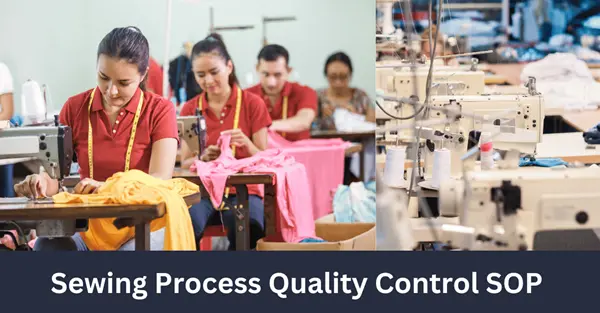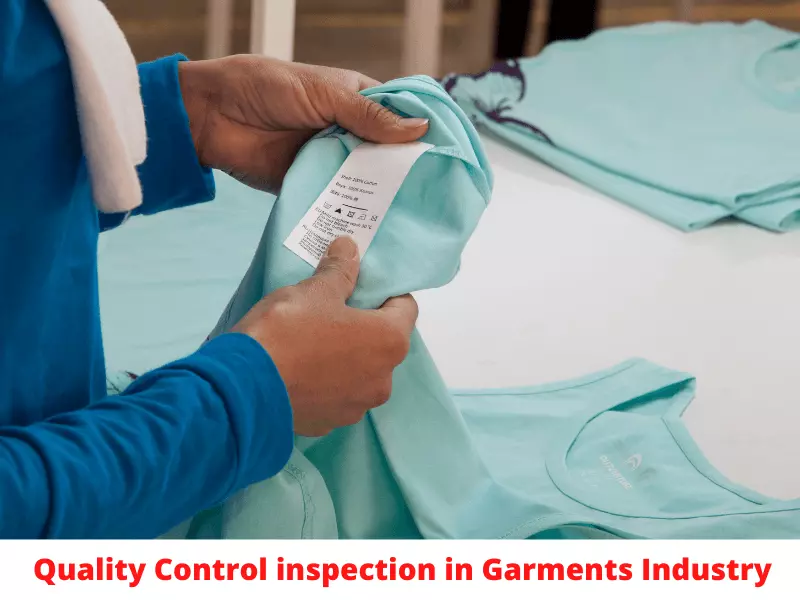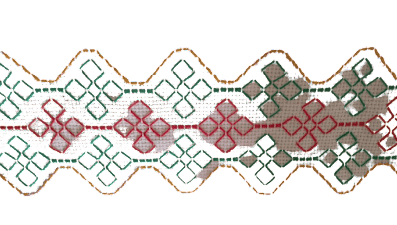Sewing Process Quality Control SOP in the Garments Industry
A comprehensive Sewing Process SOP will vary significantly based on the specific type of garment, the size of the operation, and the specific machinery and equipment used. Sewing Process Quality Control is the main garment quality, the full garment being sewn here. In this article, we explain the Sewing Process Quality Control SOP in the Garments Industry.
This procedure covers inspection at the sewing stage of production. The authority to implement and control this procedure rests with the QAM Sewing. Likewise, the authority to ensure that problems reported by the Quality department are being addressed promptly lies on the Sewing PM of the Unit.

Steps of Sewing Process Quality Control SOP in the Garments Industry
Receiving Cut Panels and Accessories
Make sure these things are followed when receiving from the cutting section:
- Material and Trim Inspection: Verify the quality, quantity, and color of fabrics, threads, buttons, zippers, and other components as per the customer-approved trim card, design, and spec sheet.
- Cutting: Accurately cut fabric pieces according to the pattern, using appropriate cutting equipment.
- Marking: Clearly mark pattern pieces with necessary symbols and measurements.
- Numbering and Bundling: Group cut pieces together shade-wise for efficient assembly in the sewing.
Sewing Operations:
- Machine Setup: Prepare sewing machines with correct needles, threads, and tension settings.
- Stitching Sequence: Define the order of sewing operations, specifying stitch types, lengths, and seam allowances style by style according to customer spec.
- Quality Control: Implement in-process checks for stitch quality, seam alignment, and other relevant parameters.
- Operator Training: Ensure that sewing operators are trained on machine operation, stitching techniques, and quality standards
- Trim Card/ Swatch/ Spec Sheet Availability:
Sewing Process – Quality Standard
- Whenever new style starts, during Pilot Run Technical Team set each and every operation standard along with Sewing/Quality Team.
- Every operation/process method been explained in details to operator in terms of achieving the Quality standard as per buyer standard (Approved Sample).
- Line Supervisor to ensure that operator understood the quality requirements and a mock up sample made as per buyer quality requirements where Operator and supervisor sign that they understood the quality requirements and the same will be verified by QC team (Line Roaming QC & QC Supervisor)
In-line inspection:
- During the PP meeting the critical process are identified based on the operations and the buyer comments and then the in Line/End line check points been finalized.
- At the time of the Line setting, the Line Roaming QC/QA In-charge explains in details to the in-line QI on checking of 100% Parts checking (Front/Back/Waist) and end line checking on referring to approved sample.
- Also checking procedure and sequence been thoroughly taught to Line QI (100% Checking). This process is continuous based on daily reports.
- The critical measurements for that particular check point are explained.
- In Line checker maintains the report for the entire panel checked and handover the hanger/Bundles with identification of clip as well as defect position marked to the line supervisor.
- Defective component should be altered by the respective operator and returned to the supervisor for checking.
- In Line and End Line checker report is verified by the Roaming QC whether all the columns have been properly filled.
- Roaming QC also verifies that the alteration pieces are rectified every hour.
Traffic Light System:
- In Line and End Line checker report is verified by the Roaming QC whether all the columns have been properly filled.
- Roaming QC also verifies that the alteration pieces are rectified every hour.
- Roaming QC studies in-line inspection reports and notes down the operation where the defect generation is high. Based on the defect-generating operation and also the based on critical operations which are identified as per the style and the buyer comments, the Roaming QC makes a list of operations he/she has to visit for the Traffic Light System.
- Roaming QC randomly picks up 7 pieces that the operator has performed. In case of any defect, the QC identifies the type of defect. Verifies the same based on the input parameters if required and explains to the operator the reason for the defect. Also, the line supervisor is informed on the same.
- If no defective is found GREEN quality banner is put.
- Even if the QC finds one defect then the Line QC raises the YELLOW Signal for that particular operator and informs the Sewing Floor in charge immediately.
- The Floor In-charge along with the Line Supervisor performs the corrective action for that particular operator. Later the QC performs 2 audits within one hour for that operator. When 2 consecutive audits are passed then the Yellow Signal is removed.
- If the problem continues then the RED signal is turned on & the operation is stopped & sewing PM is informed. The sewing Production Manager needs to take corrective action immediately. If required operator needs to be sent back to the training center for training to achieve the Right First Time of that particular operation.
Measurement Audit – Before wash:
- CAD department to issue, Target before wash measurements based on shrinkage grouping to Sewing.
- 4 Garments are verified every 2 hours. Totally (16 garments covering all sizes of the production are taken). In case of deviation in the measurements, the QC further verifies 5 garments in the operation where the deviation has occurred. The QC reports to the QA In-charge regarding the deviation.
- QA in charge analyses the deviation and based on the causes of the deviation the Sewing In-charge is informed for corrective action.
- Technical in-Charge makes the necessary corrections to arrest the measurement deviation. In case of deviation due to the previous process, he communicates the same and ensures that the corrective action has been taken.
Sewing Audit:
100% of the Garments are checked inside and outside at the End Line. QA Auditor Conducts Audit based on AQL 1.5 on End line passed garments and only Audit Passed garments are sent for washing/ next process. If the Audit fails, need to recheck 100% and again offer for the QA Auditor to do the Audit.
AQL TABLE – SEWING AUDIT
| AQL PLAN – (LEVEL 1) | ||
| LOT SIZE OR QUANTITY TO BE AUDITED | AQL 1.5 | |
| INSP | ACPT | |
| LESS THAN 151 | 8 | 0 |
| 151 – 280 | 8 | 0 |
| 281 – 500 | 32 | 1 |


